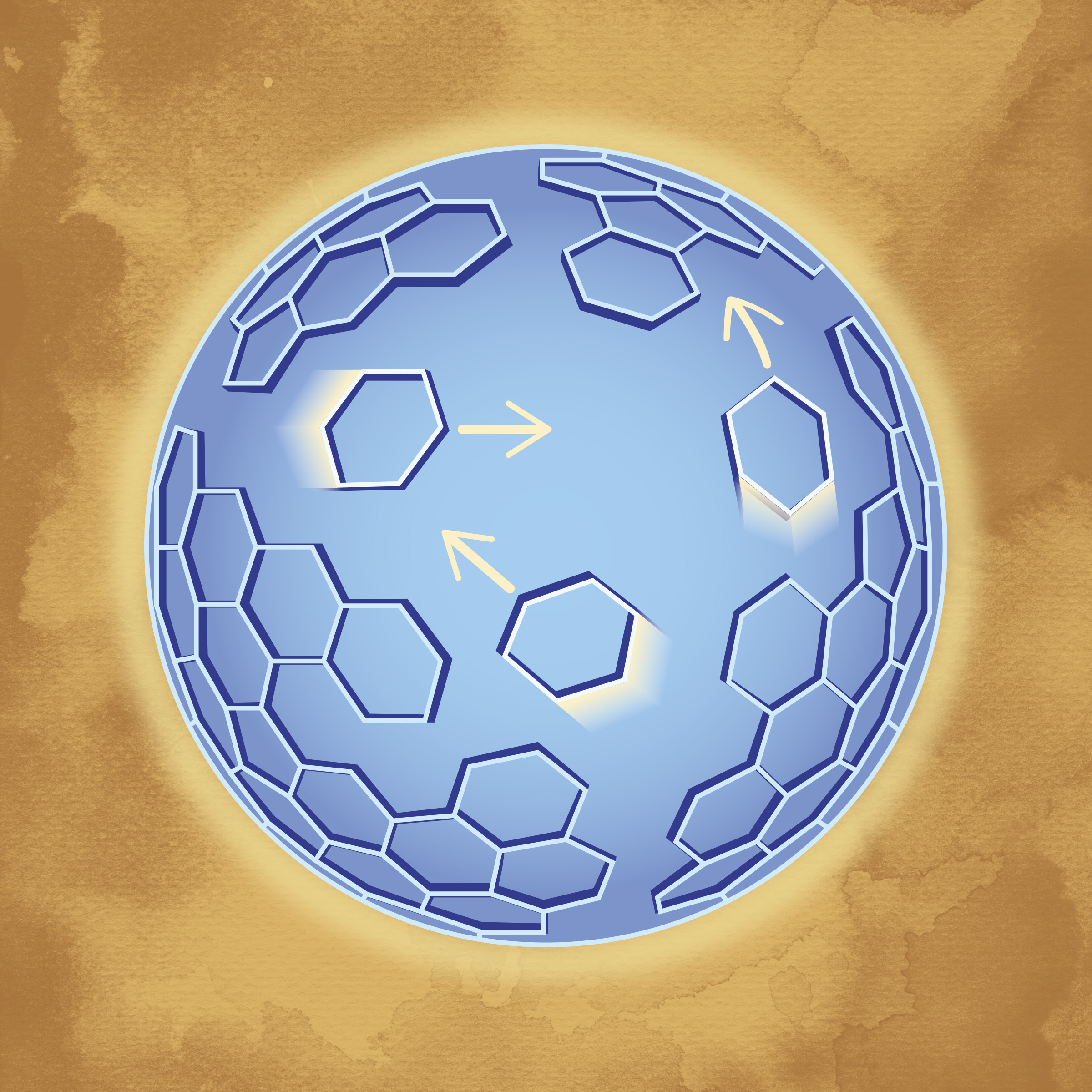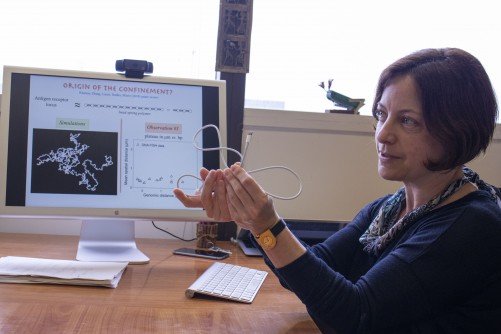Researchers from the Gene Therapy Program (GTP) at the Perelman School of Medicine at the University of Pennsylvania will present ten research abstracts, two invited talks, and a workshop presentation highlighting their translational science and discovery research on gene therapy, gene editing, and adeno-associated virus (AAV) vector technology at the American Society of Cell and Gene Therapy (ASGCT) 27th Annual Meeting on May 7 – 11, 2024 in Baltimore, Maryland.
Tag: cell
Icahn School of Medicine at Mount Sinai Names Miriam Merad, MD, PhD, as Dean for Translational Research and Therapeutic Innovation
Miriam Merad, MD, PhD, a world-renowned immunologist, has been appointed Dean for Translational Research and Therapeutic Innovation of the Icahn School of Medicine at Mount Sinai. The appointment reaffirms Icahn Mount Sinai’s commitment to pioneering medical progress and catalyzing the rapid advancement of research innovation. Dr. Merad, the Mount Sinai Professor in Cancer Immunology, will also continue to serve as the founding Chair of the Department of Immunology and Immunotherapy, Director of the Marc and Jennifer Lipschultz Precision Immunology Institute, and Director of the Human Immune Monitoring Center.
As Dean, Dr. Merad aims to elevate early clinical trials at Icahn Mount Sinai, streamline the clinical trial process, cultivate a culture of mechanistic clinical trials throughout the campus, and forge stronger partnerships with the pharmaceutical and biotech sectors.
Sniffing our way to better health
Imagine if we could inhale scents that delay the onset of cancer, inflammation, or neurodegenerative disease. Researchers at the University of California, Riverside, are poised to bring this futuristic technology closer to reality.
Ancient retroviruses played a key role in the evolution of vertebrate brains
Researchers report in the journal Cell that ancient viruses may be to thank for myelin—and, by extension, our large, complex brains.
Scientists discover hidden army of lung flu fighters
Scientists have long thought of the fluid-filled sac around our lungs merely as a cushion from external damage.
By growing animal cells in rice grains, scientists dish up hybrid food
From lab-grown chicken to cricket-derived protein, these innovative alternatives offer hope for a planet struggling with the environmental and ethical impacts of industrial agriculture.
Male fertility gene discovery reveals path to success for sperm
The discovery of a pair of genes that work in perfect harmony to protect male fertility, could provide new insights into some unexplained cases of the most severe form of infertility, research suggests.
Nutrients direct intestinal stem cell function and affect ageing
The capacity of intestinal stem cells to maintain cellular balance in the gut decreases upon ageing.
New tumor spatial mapping tool will help clinicians assess aggressiveness of cancer and personalize treatment
Scientists have developed a new AI tool that maps the function of proteins in a cancerous tumour, enabling clinicians to decide how to target treatment in a more precise way.
Rakuten Medical to Present at 2023 Jefferies London Healthcare Conference on November 14
Rakuten Medical, Inc., a global biotechnology company developing and commercializing precision, cell targeting therapies based on its proprietary Alluminox™ platform, today announced that the Company will present at the 14th Annual Jefferies London Healthcare Conference being held in London, UK, on November 14-16, 2023.
Rockland Launches Novel Analytical Tools to Assess Drug Delivery: Revolutionizing Oligonucleotide Therapeutic Development
The first and only panel of specialty reagents designed to detect PS modifications independent of sequence, format, or location, streamlining candidate triage for unparalleled cost and time savings in non-clinical/pre-clinical discovery assessment of oligonucleotide drug candidates, clinical trials for immunogenicity studies, and other applications.
DNA aptamer finds novel application in regulating cell differentiation
Generating specific cell lineages from induced pluripotent stem cells and embryonic stem cells is the holy grail of regenerative medicine.
Single Cell Protein: an alternative eco-friendly protein source derived from microorganisms
Single Cell Protein (SCP) is an alternative and eco-friendly protein source from microorganisms which can be produced by utilizing agro-industrial wastes. SCP presents multiple applications, including animal feed, human food, packaging and is characterized by a rich nutritional profile.
Major Ovarian Cancer Discovery; Findings Published in Cell
The Birrer Laboratory at the University of Arkansas for Medical Sciences (UAMS) Winthrop P. Rockefeller Cancer Institute helped discover a proteogenomic signature in ovarian cancer that may improve the way the disease is treated around the world. The discovery, which identifies a 64-protein-gene signature that can predict primary treatment resistance in patients with high grade ovarian cancer, was published Aug. 3 in the journal Cell.
Penn Research Provides Better Understanding into How Genes Make Us Prone To Allergies
New research is bolstering scientific understanding behind why some people are more prone to allergies than others. Researchers in the Perelman School of Medicine at the University of Pennsylvania identified how genetic differences that alter a specific protein called ETS1 can affect our body’s response to allergies. They found that small changes in ETS1 in an animal model can lead to an increased likelihood for allergic reactions that cause inflammation. The findings were published recently in Immunity.
CUVET Successfully Developed the First Stem Cell Transplantation Technology to Treat Pet Diabetes
For the first time in Thailand, a research team from Chula’s Faculty of Veterinary Science (CUVET) is the first to have successfully developed a method to culture dog pancreatic cells from stem cells and cell transplantation technology. They aim to test the method in the lab and sick animals suffering from diabetes.

Phase separation found in immune response within cells
Protein complexes that play a critical role in launching an immune response assemble in droplets that form within the liquid environment in cells much like oil droplets in water, UT Southwestern scientists report in a new study. The findings, published in Molecular Cell, could lead to new interventions to regulate immunity in individuals with overactive or underactive immune responses.
Researchers dig deeper into how cells transport their waste for recycling
Scientists at Sanford Burnham Prebys have gained a deeper insight into the intricacies of autophagy, the process in which cells degrade and recycle cellular components.
Could neutrophils be the secret to cancer’s Achilles’ heel?
A study published in the June 10, 2021 issue of Cell describes a remarkable new mechanism by which the body’s own immune system can eliminate cancer cells without damaging host cells. The findings have the potential to develop first-in-class medicines that are designed to be selective for cancer cells and non-toxic to normal cells and tissues.

Pioneering method reveals dynamic structure in HIV
The method reveals that the lattice, which forms the major structural component of the human immunodeficiency virus (HIV), is dynamic. The discovery of a diffusing lattice made from Gag and GagPol proteins, long considered to be completely static, opens up potential new therapies. The method can be applied to biomedical structure.
Combining mouse and human data uncovers new gene regulating cholesterol
By combining the fine-grained detail available from animal studies with the statistical power of genetic studies involving hundreds of thousands of human genomes, researchers have discovered a new gene involved in regulating the body’s cholesterol.

Life could have emerged from lakes with high phosphorus
Life as we know it requires phosphorus, which is scarce. How did the early Earth supply this key ingredient? A University of Washington study, published Dec. 30 in the Proceedings of the National Academy of Sciences, finds answers in certain types of carbonate-rich lakes.

Applying the Goldilocks Principle to DNA Structure
Scientists consider the form that may be “just right” for scripting gene expression The Goldilocks of fairy-tale fame knew something about porridge. It needed to be just right—neither too hot nor too cold. Same with furniture—neither too hard nor too…